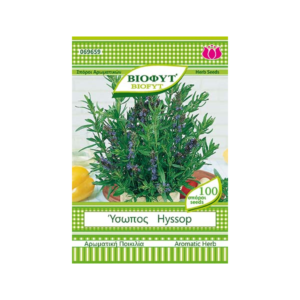Lavender
Lavender
Lavender is one of the most famous aromatic plants that we plant in pots and is a basic plant found in every garden on a balcony. There are many reasons to plant lavender in a pot, as apart from its beauty it is a plant with multiple uses. Lavender grows best in sunny locations on the balcony and is drought tolerant. We prefer a balcony with south or west exposure so that our lavenders have good growth and flowering. We plant lavender in deep pots with a diameter and height of at least 30 cm, as lavender has a strong root system that goes deep and shows rapid growth.
Lavender has low water requirements, while overwatering can cause root rot, especially if water is not properly drained from the pot. We water the potted lavender every 5 days, during the spring and autumn, and every 3 days during the summer. In terms of fertilization, we incorporate 2 tablespoons of complete compost every month from early spring to late fall to promote growth and flowering.
More Products
Celery aromatic
Celery aromaticCelery varieties, depending on the part of the plant for which they are grown, are divided into two main categories: a) leafy ones that have rich foliage vegetation and b) rhizomes that have less growth of the above-ground part of the plant and more root growth. The best-known varieties are the traditional variety of celery, the variety of celery and the variety of celeriac, which have the following characteristics: Common variety of celery: Traditional local leafy variety of celery with thin stems and leaves that have a strong aroma and taste Celery variety: Classic leafy variety of celery with thick crisp stems that reach a height of up to one meter and large leaves but not as strongly scented as the common variety. Celery root variety: Characteristic variety of root celery eaten for its large round root, fresh or cooked in salads and soups.
Hyssop
HyssopHyssop is a low shrub that reaches 60 cm in height. Its leaves are lanceolate without a stem and its flowers are dark blue with purple stamens. It has a strong clean and sweet smell with touches of honey aroma. The top note of its essential oil is camphorous and in its middle notes, a warm spice scent lingers as an impression. The color of the essential oil is yellow-green.
Celery
CeleryCelery varieties, depending on the part of the plant for which they are grown, are divided into two main categories: a) leafy ones that have rich foliage vegetation and b) rhizomes that have less growth of the above-ground part of the plant and more root growth. The best-known varieties are the traditional variety of celery, the variety of celery and the variety of celery which have the following characteristics: Common variety of celery: Traditional local leafy variety of celery with thin shoots and leaves that have a strong aroma and flavor Celery variety: Classic leafy variety of celery with thick, crunchy stems that reach a height of up to one meter and large leaves that do not have as strong a scent as the common variety. Celery root variety: Characteristic variety of root celery eaten for its large round root, fresh or cooked in salads and soups.
Borloto beans
Borloto beansThere are many popular native and traditional bean cultivars, both low and climbing, to choose from. Most growers prefer fresh bean varieties that do not have fiber, as they are more pleasant to eat. We should note that the dry bean varieties have a harder shell and more fiber. Well-known varieties of fresh beans are chauli, terli, broad bean (black-eyed), broad bean (snake bean), mullets (beads), canary beans (yellow beans), bulgara (early mullet), zargana, climbing mullet, while in some regions we will meet other interesting local varieties. An excellent traditional variety of dry beans are the giants of Prespa. It is worth noting that the climbing bean varieties are much more productive than the low varieties, while at the same time they have a longer production period, although they take longer to enter production than the low ones.
Bean cultivation needs fertile soil, rich in organic matter and with good drainage to have good growth and fruiting. When preparing the soil for cultivation, we first plow the field to make the soil sufficiently loose, as it is necessary for the formation of a rich and strong root system of the bean. Then, before planting the bean, we incorporate enough compost, digested manure and organic manure to enrich the soil with organic matter and nutrients.
Chard
ChardThe chard, the beet’s cousin! Swiss chard is not grown for its underground part, the root like beetroot, but for its tasty leaves, which we eat cooked or boiled in various recipes. A fall planting vegetable, Swiss chard is an easy crop with no particular requirements, and very healthy as it helps regulate sugar. It is grown as an annual vegetable, as it blooms in the second year. There are many varieties of chard, with light green to dark green leaf color and red or white stems and veins, depending on the variety.
Varieties of Swiss chard with red veins make them visually similar to beets. Note that due to its impressive foliage, the chard also adds decorative value to our autumn vegetable garden. The chard prefers cool weather. Although it does not tolerate high temperatures, the chard seeks sunny or semi-dark places, while it is also relatively resistant to light frost. It wants deep fertile soils, enriched in organic matter that also have good drainage.









